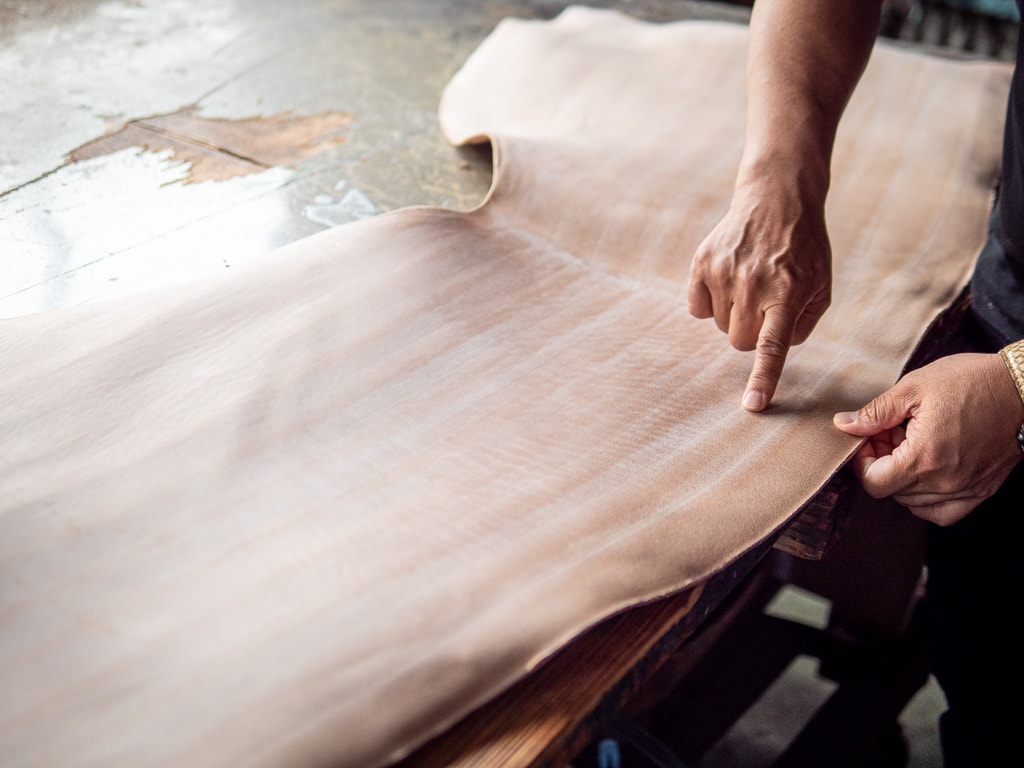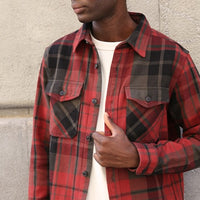
World's Best Horsehide & Cordovan Leather
A year ago Redcast received for the first time the Horsehide Jacket by The Flat Head, one of our favourite horsehide jackets of all the ones we have seen over the years. We also received the wonderful Cordovan Card Case and the Mid-Length Wallet from the Japanese brand. They are a masterpiece in leather, outstanding for an unequalled quality and attention to detail that leaves everyone in awe. Our curiosity to explore each facet of their process drove us to embark on a unique adventure.
With the generous collaboration of The Flat Head team we were guided through a journey that took us directly to the bowels of the Shinki Tannery during our recent trip to Japan.
There we watched each phase of the process in rigorous detail, from start to completion, which unveiled the laborious and meticulous art of tanning the best horsehide leather the world has to offer. It is this leather that brings to life the unrivalled Teacore horsehide jackets by The Flat Head and Real McCoy’s that we all know.
If you dive into this post we will take you by the hand through this step-by-step process. An adventure that will demonstrate that the price of these creations is more than justified.

- Raw horsehide:
Each hide corresponds to a whole horse. They are all subproducts of the meat industry. The hides still have their hair and are transported in a salted state from Europe, mainly Poland, to their destination. The salting helps to extract humidity from the hides, making them less prone to spoiling. European hides are the largest and most stable.

- Cutting of the hides:
The hides are divided into rump and body sections. The rump section is turned into cordovan leather, whereas the body section is used for garments, wallets, handbags and other products. At this stage they go separate ways, as each type of hide requires a different type of processing.
- Cleaning of the hides:
The divided hides are placed in a drum and put through a wash with water and hair solvent. Lime is added to dissolve the hair and soften the hides.
The drum rotates, alternating between rotating and stopping, to facilitate the cleaning process. Approximately 150 to 200 hides are processed in each batch.

- Cutting down excess hide:
The excess of internal flesh and other remnants that cannot be completely removed by cleaning are carefully cut down.
These are the pre-tanning processes, which are crucial. They account for 70% of the hide’s final result.
2. TANNING PROCESS:
Tanning is the hide conservation process to prevent the hides from rotting. This process transforms “skin” into “leather”.
The hides are submerged in pit vats for tanning. The tanning pools are large tubs similar to swimming pools, and the tanning time is around one month for the rump section and around two weeks for the body section. Given that the fibres of the hides are dense, it is important to tan them slowly. Each tanning pool has a different concentration, which gradually increases over time. Furthermore, an up-and-down machine ensures constant temperature and concentration inside the pool.
The tannin used in tanning is called mimosa tannin.
*Mimosa is a resin extracted from the bark of acacia trees, and so the process is purely vegetal and no chemicals are used.

- Greasing:
After the tanning process in the pit vats, the hide is treated lightly with grease in a drum. The purpose of adding grease is to soften the hide, prevent the surface from cracking and increase resistance to tearing.

- Cordovan shaving:
Cordovan, which is a layer hidden inside the hide, is revealed when the excess hide is shaved.

- Drying:
The hide is dried and stretched to remove creases. Each piece of hide has different characteristics, and so it is carefully stretched while assessing its individual properties.

- Ageing:
The dried hide is aged for 4 or 5 months. This ageing process allows the tannins to penetrate and soften the fibres. Including the tanning time, this process takes more than six months.

The main focus is on classifying cordovan leather.
The pieces of cordovan are carefully assessed and classified according to their size and state. The larger pieces are reserved for school satchels and belts, while the smaller ones are used for a variety of small accessories such as the iconic Flat Head wallets available at Redcast. Obtaining a few large-size cordovan pieces from a batch of 100 is exceptionally rare, denoting its scarcity and desirability.

This is the stage in which the leather is dyed and is given a final application of oil liquor.
The hide is placed inside a drum, which rotates to ensure the uniform distribution of colour throughout the material. After dyeing, the drum is again used for applying the final coating of oil liquor to the leather.
6. FINISHING PROCESS:
This is the final stage of the process.
- Coating (Horsehide):
The hide is sprayed with paint to apply one coat. Multiple spraying and drying rounds are carried out to achieve a uniform and durable colour. Given that the tanning process with tannin produces a brown-coloured leather, the application of a black coat at this stage creates the brown core characteristic of the teacore finish.

- Glazing (Cordovan):
Pressure is applied while generating friction using glass pearls, the result of which is a high-gloss sheen. The tanning process with tannin gives the leather its distinctively lustrous appearance in this stage.

We hope you have enjoyed discovering the full process as much as we have :)

Leave a comment and let us know which part of the process you find most impressive or has surprised you the most👇














COMMENTS ON THIS POST (1)
Whittney Strahota
Are you able to tan my horses hide?
Leave a comment
This site is protected by hCaptcha and the hCaptcha Privacy Policy and Terms of Service apply.